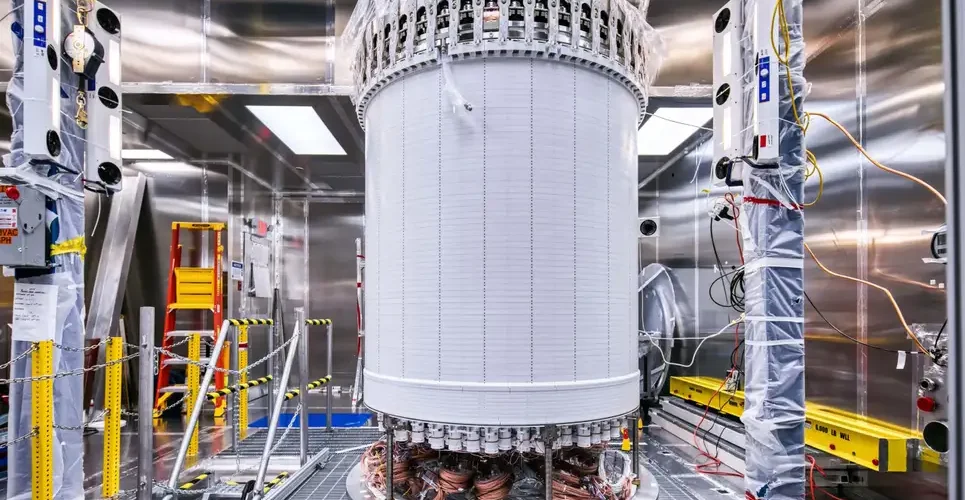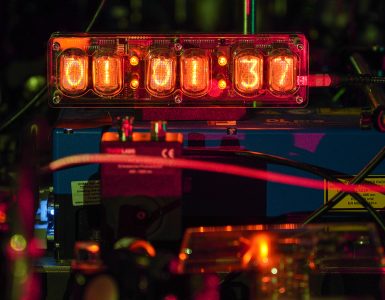The LUX-ZEPLIN (LZ) experiment team has announced the results from its first scientific run today; the experiment is the world’s most sensitive dark matter detector, and though it did not find any dark matter in this first round, the team confirmed that the experiment is working as expected.
The LZ experiment detector is made up nested tanks of liquid xenon, each 1.5 meters tall and 1.5 meters wide, buried under South Dakota. The idea is that a dark matter particle whizzing through space will eventually bounce off one of the xenon atoms, knocking loose electrons in a flash that is recorded by the experiment. The tank is buried about a mile below Earth’s surface to minimize the amount of background noise. Today’s announcement comes after 60 live days of data collection that spanned December 25 to May 12.
“We’re looking for very, very low-energy recoils by the standards of particle physics. It’s a very, very rare process, if it’s visible at all,” said Hugh Lippincott, a physicist at UC Santa Barbara and a member of the LZ team, in a press conference today. “You can shoot a dark matter particle through 10 million light-years of lead and expect only one interaction at the end of that light-year.”
Dark matter is the catch-all term for the unknown stuff that appears to make up about 27% of the universe. It hardly ever interacts with ordinary matter, hence its “darkness” to us. But we know it’s out there because, while never directly detected, it has gravitational effects that can be seen on cosmic scales. (NASA breaks down the concept pretty well here.)
There are many candidates for dark matter. One is the WIMP, or a Weakly Interacting Massive Particle. Unlike other dark matter hypotheses like axions or dark photons, which are so small and diffuse that they may behave more like waves, WIMPs would have mass but hardly ever interact with ordinary matter. So to detect them, you need a device that pretty much mutes all other physics going on.
Read More at Gizmodo.com





